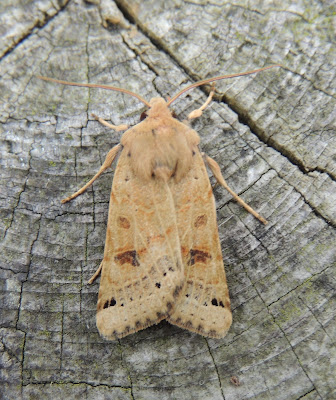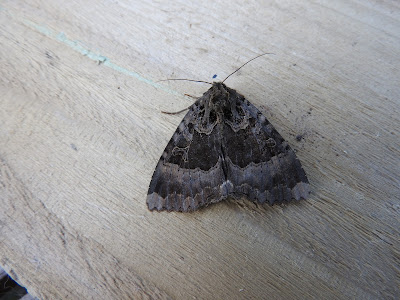Scotney - warm, dry and sunny, SW 2 - Suitable weather then for a change of scene for this morning`s Ted walk at a site I`ve neglected of late. We started off checking the front lakes from the cycle track which held the usual common diving and dabbling ducks, feral geese (120 Egyptians), Cormorants and gulls, four Little Egrets, two Curlews and singles of Green Sandpiper, Whimbrel and Greenshank. There were very few birds on the lakeside fields apart from ten Yellow Wagtails, 20 Meadow Pipits and 50 Linnets near the farm buildings. We then tramped out back to the new pits where 200 Lapwings, a Common Sandpiper and a Redshank were added to the meagre wader list, but little else. The highlight of the farmland birds were two small flocks of Tree Sparrows near the nest boxes along with ten more Yellow Wagtails and several Ravens ovehead cronking loudly. A field near the dung heap attracted a couple of hundred Meadow Pipits, Skylarks and Goldfinches, but no sign of any Corn Buntings, and not a single raptor was seen throughout the visit. Other sundry birds included two Wheatears, two Stonechats and a Grey Wagtail over calling.
Yellow Wagtails and Tree Sparrows, Scotney
En-route to the point we called in at the bird reserve for lunch overlooking Cooks Pool where all eight Cattle Egrets and a Glossy Ibis were noted around the suckling herd and where we bumped into Neil B and family for a catch-up. The weather conditions were most unsuitable for a seawatch but I wanted to see how Ted would react to an hour (1230-1330hrs) of static birding at the fishing boats; mind you, after walking for miles around Scotney he was probably pleased to have a rest - I know I was! I wasn`t expecting much but there was a steady down-Channel trickle of, mostly distant, Sandwich Terns, Gannets and auks (including three close Razorbills), four Arctic Skuas, two Common Scoters and my first Red-throated Diver of the autumn. And as for Ted, he was fine, until a yacht hove into view which set him off for a spot of barking!


















.JPG)
.JPG)
.JPG)

.JPG)
.JPG)
.JPG)
.JPG)
.JPG)
.JPG)

.JPG)





.JPG)
.JPG)
.JPG)
.JPG)
